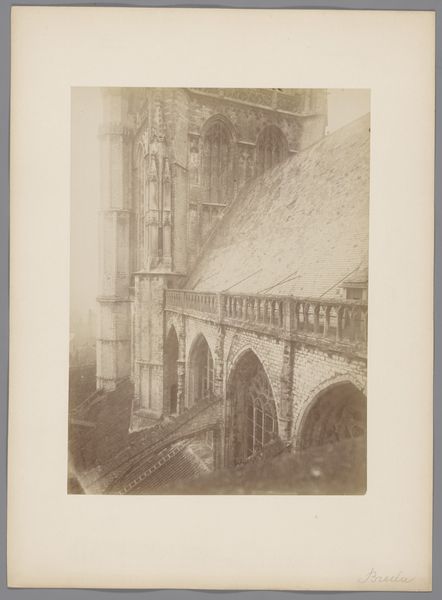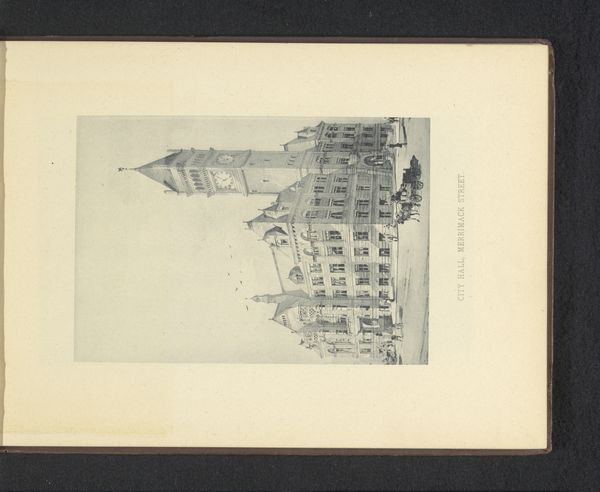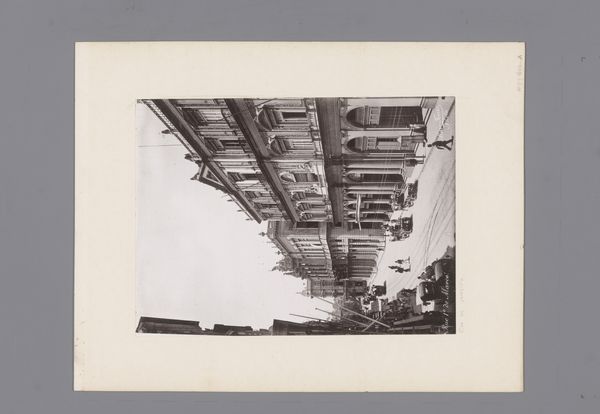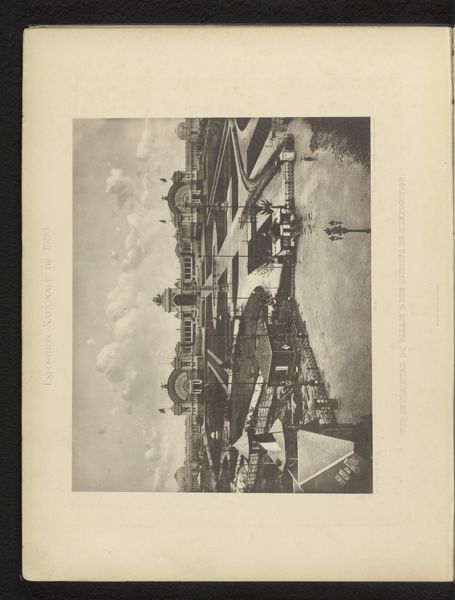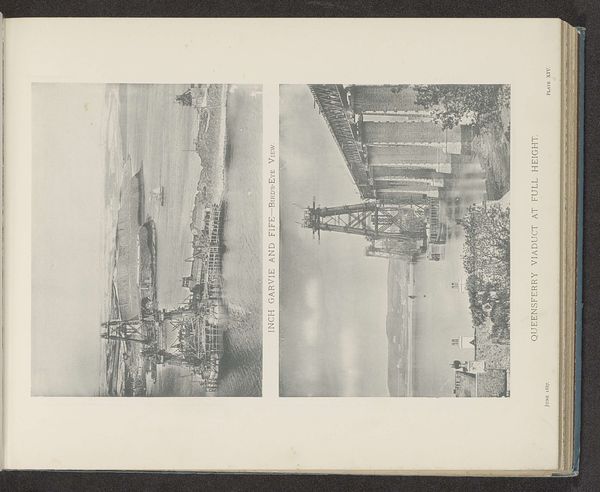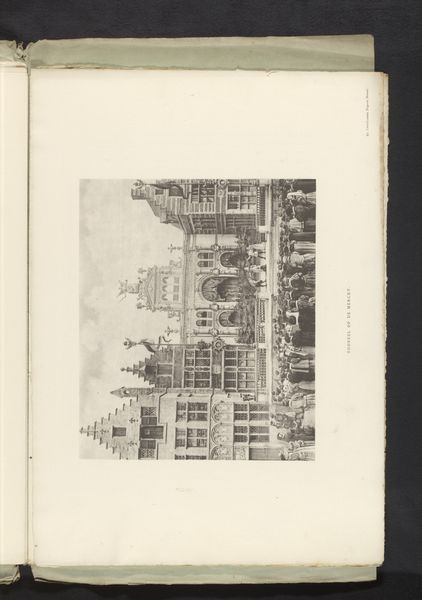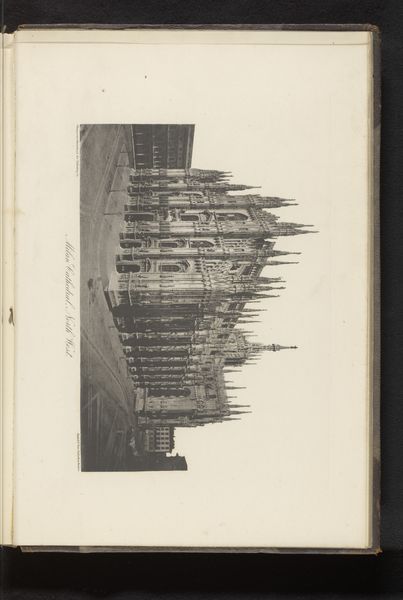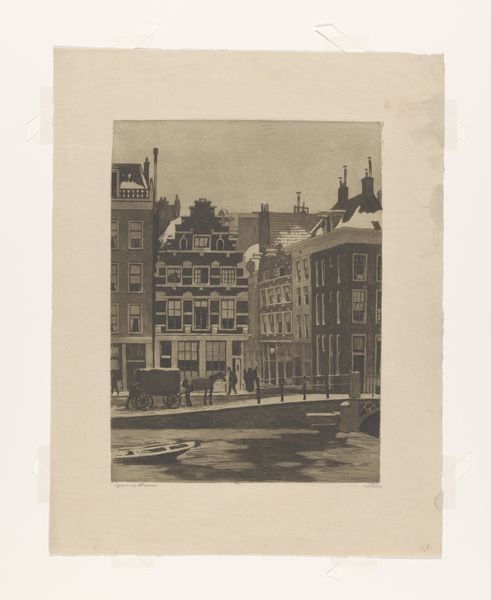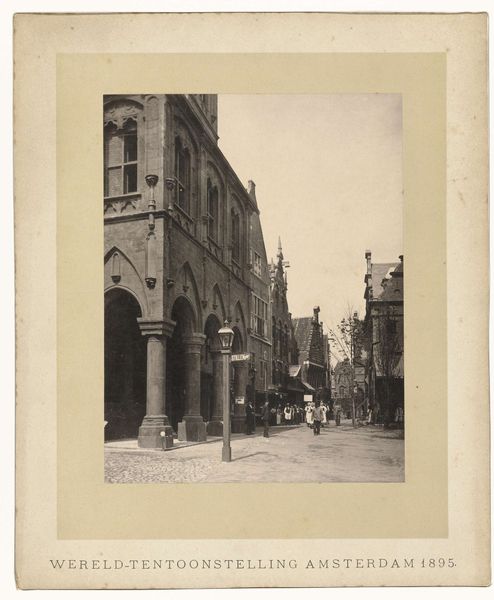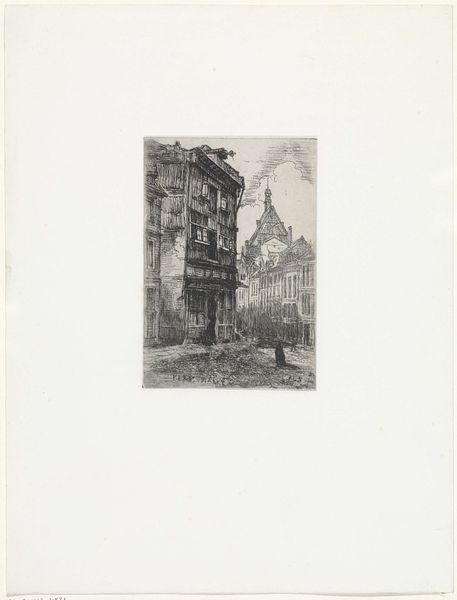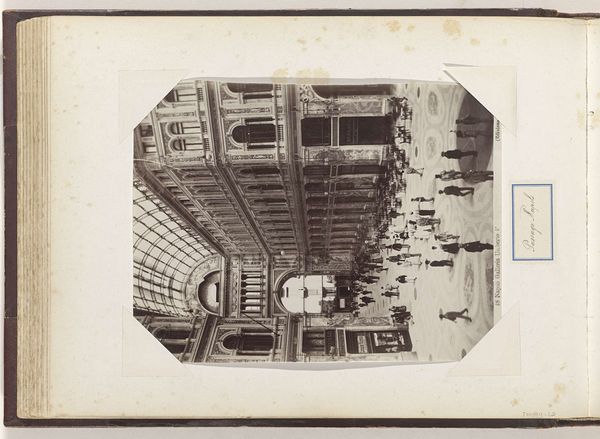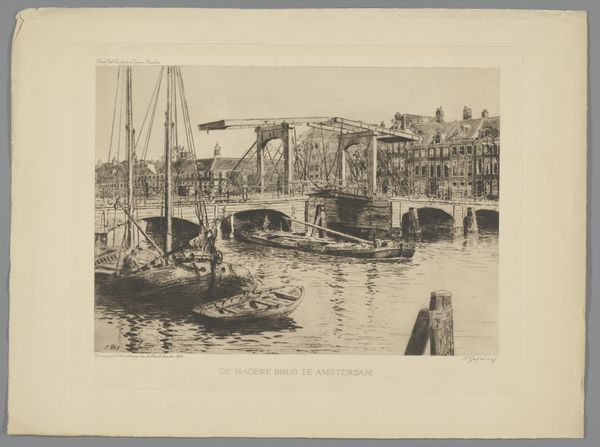
photography, site-specific, architecture
#
landscape
#
photography
#
site-specific
#
architecture
Copyright: Rijks Museum: Open Domain
Editor: Here we have a photograph, "Kapot stadhuis van Middelburg," taken sometime between 1940 and 1946. It depicts the damaged town hall with large wooden supports holding up the walls. It has quite a melancholic feel. How do you interpret this work? Curator: This image, though seemingly a straightforward documentation of architectural damage, speaks volumes about the trauma and resilience in the aftermath of war. It's not merely about a damaged building; it's about the disruption of a community's identity, its history literally crumbling. Look at the photograph’s texture. Editor: Yes, I see that it feels very stark and direct. Curator: The brutal imposition of these crude wooden supports against the delicate stonework—doesn't it suggest a struggle between a desperate need to rebuild and the irreparable loss of what once was? What does it suggest to you about the values a community upholds? The text below says: During our tour of Zeeland, we noticed that the damage was not too bad, and certainly 99% of our numerous works of art in Zeeland have been preserved. It already started placing props against one of the walls of the town hall in Middleburg. Editor: That’s true; it brings to light the concept of perseverance and safeguarding collective heritage. So what were the challenges to protect cultural works at that time? Curator: Exactly. Resources would have been sparse. Choices had to be made about which landmarks or objects were worthy of protection. These kinds of photographs invite us to examine the choices societies make in times of upheaval and whether these are based on inherent power structures, cultural value, or other less transparent means. It makes me question what stories aren't being told alongside this "success." Editor: That's a powerful perspective. I had focused on the visual impact but missed those layers of meaning. Thanks for helping me look at it differently. Curator: Of course. And thank you; your insights made me reflect on the tension between preservation and progress.
Comments
No comments
Be the first to comment and join the conversation on the ultimate creative platform.
